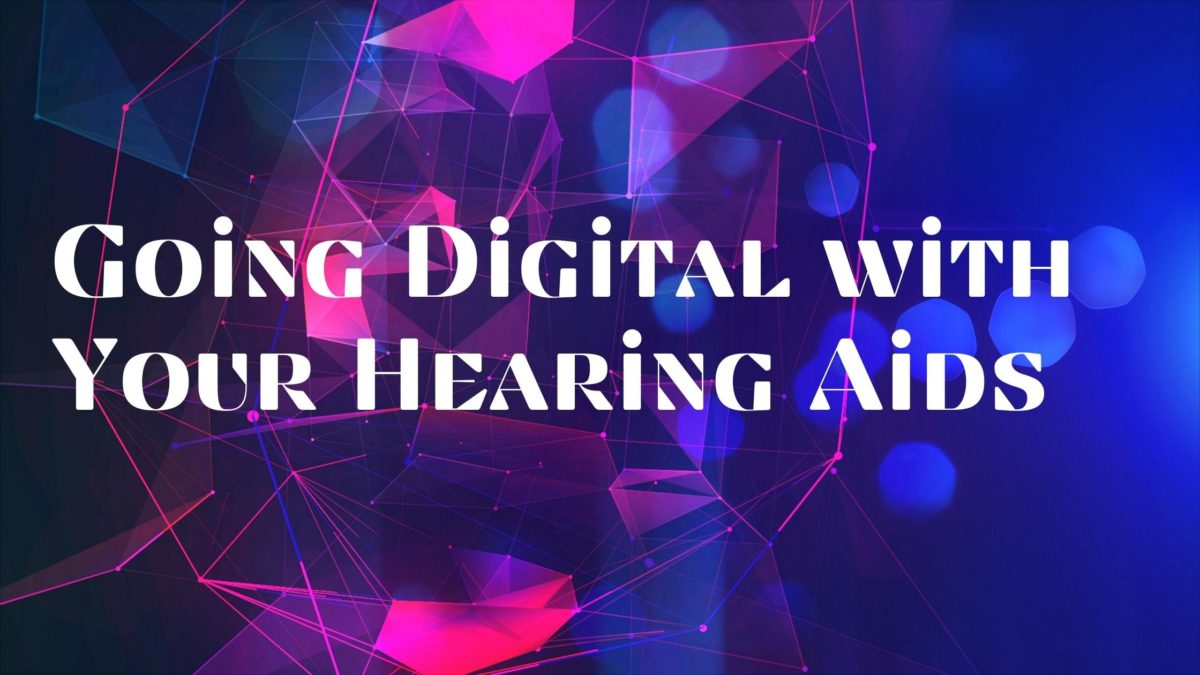Remember pulling out a map before a road trip to plan your route? You might even have fond memories of this tradition. But it’s unlikely you’ve used a paper map for years, now that the easiest and most relied upon technology for driving to an unfamiliar place is available via the map app right on your smartphone.
It’s easy to romanticize the simplicity of the past, even when it comes to something as commonplace as finding the best driving route, but you might also be forgetting the headaches that came with these analog ceremonies. For instance, your paper map didn’t warn you that the interstate highway you’ve chosen to travel was under massive construction, adding hours upon hours onto your trip. Or, when you missed your exit, you might not have noticed for miles and had to pull over and re-navigate, losing time there, too.
Just as our habits around so many activities have shifted from analog to digital, so has the hearing aid industry. In the past, analog hearing aids were more commonplace and affordable. Now though, thanks to advancements in the industry, digital hearing aids are far more widespread and budget-friendly. And though you might pine for ‘simplicity’ of yesterday’s model, digital hearing aids pack way more function and usability into tiny, intelligent packages.
Digital vs. Analog
What exactly is the difference between digital and analog hearing aids? Analog hearing aids work according to continuous sound waves. In short, they make them louder. The effect of this is that all sound is equally amplified. Your audiologist may have programmed settings into your analog hearing aids, like quiet conversation for example, which you could switch to by pressing a button directly on the hearing aid.
Digital hearing aids take sound waves — the external noise around you — and convert those into digital signals. This technology allows them to exactly duplicate the sound and then filter through the information, using a computer chip, to provide the wearer with a more sophisticated presentation of sound, sometimes only amplifying the frequencies you’ve lost or the sounds that you want. For instance, a digital hearing aid can find speech and prioritize that sound information over say, the lawn mower your neighbor is operating. They are less prone to common analog complaints like whistling and audiologists can even calibrate the sound to match a specific pattern of hearing loss.
For a while, there were both analog and digital options of hearing aids on the market. These days, most people purchasing hearing aids are solely looking at digital choices.
The rise of digital
Analog hearing aids ruled the school for decades. In the 1980’s, a digital chip that was both powerful and small enough for a wearable hearing aid was developed. But analog chip technology was far more advanced at the time. Being the dominant technology in the hearing aid industry meant that hours and dollars of research and development had resulted in a very small, mighty analog chip and so digital chips had a lot of catching up to do.
A decade later, their time had come. The first commercially successful digital hearing aid debuted from Widex in 1996 and shortly after The Oticon Company produced a worthy competitor. At the same time, consumers began seeking more digital options as their own comfort level with the technology grew.
Where digital shines
Digital hearing aids perform far better than analog hearing aids in a few arenas, but especially in canceling out acoustic feedback. You’ve probably noticed that all hearing aids on the market offer increased feedback cancellation, which is uniquely solved by digital technology.
We couldn’t have predicted how effortless it would be to connect hearing aids to our personal devices in the 1990’s. Maybe we would have problems envisioning our reliance on personal devices at all! But digital hearing aids allow for bluetooth connection to your smartphone, making telephone calls simple.
You can also link digital hearing aids to your phone and control settings with an app, just the touch of a button. Data and other historical information for your hearing aids can be transferred and translated onto an app for ease of retrieval and comparison.
If you want to leave analog for digital
There is a lot to be said about being comfortable with the technology you’re using. And maybe you’d still take a physical map over a navigation app any day. But if you are currently wearing analog hearing aids and would like to investigate the benefits of digital, like bluetooth connectivity or advanced feedback cancelation, we can help you weigh your options.

